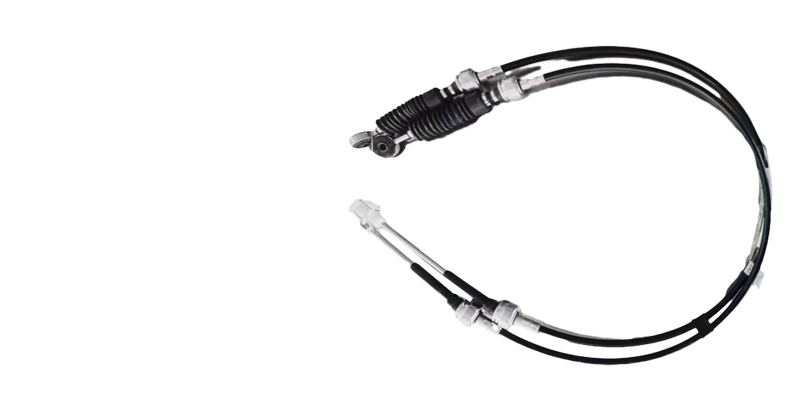Understanding Handbrake Cable Function and Maintenance Tips for Better Vehicle Performance
Understanding Hand Brake Cables Importance, Functionality, and Maintenance
The hand brake, also known as the emergency brake or parking brake, is a critical component of any vehicle's braking system. It provides an essential function of immobilizing a vehicle to prevent it from rolling when parked. At the heart of the hand brake system lies the hand brake cable, a robust piece of engineering that ensures reliable performance. In this article, we will explore the role of the hand brake cable, its functionality, common issues, and maintenance tips.
What is a Hand Brake Cable?
The hand brake cable is a flexible metal cable, usually housed in protective tubing, that connects the hand brake lever (found within the vehicle's cabin) to the braking mechanism at the rear wheels. When the driver pulls the hand brake lever, the cable transmits that force to activate the brake shoes or pads. This simple yet effective mechanism is designed to lock the brake in place, allowing the vehicle to stay stationary even on inclined surfaces.
Importance of Hand Brake Cables
Hand brake cables play a vital role in overall vehicle safety. In situations where the primary braking system fails, the hand brake serves as a backup. This is especially critical during an emergency where immediate stopping power is necessary. Furthermore, in areas with steep inclines, the hand brake allows drivers to park securely without the risk of the vehicle rolling away.
However, the reliability of the hand brake is heavily dependent on the condition of the hand brake cable. Over time, these cables can wear out or become damaged due to corrosion, fraying, or rust. Regular inspection and maintenance of the hand brake cable can help ensure that it functions properly when needed most.
Functionality of Hand Brake Cables
When the driver engages the hand brake, the lever pulls on the hand brake cable, which is connected to the rear brake assembly. This action causes the brake shoes to press against the brake drum or forces the brake pads against the rotor, depending on whether the vehicle uses drum or disc brakes. The mechanical advantage provided by the lever system allows even a small amount of force applied to the lever to translate into significant braking force at the wheels.
In modern vehicles, some hand brake systems are integrated with electronic components, allowing for more advanced features such as automatic engagement and disengagement of the hand brake depending on the vehicle's conditions. However, classical cable-operated hand brakes are still widely used and appreciated for their simplicity and reliability.
Common Issues with Hand Brake Cables
Several issues can compromise the functionality of hand brake cables
hand brake cable

1. Fraying or Wear Over time, cables can fray due to constant use or exposure to harsh environmental conditions. This fraying can lead to ineffective braking.
2. Rust or Corrosion If the protective tubing is damaged, moisture can infiltrate and cause rusting of the steel cable inside. Corrosion can hinder the flexibility of the cable, leading to stiff operation or complete failure.
3. Misalignment If the cable becomes misaligned due to wear or improper installation, it can lead to uneven braking or a complete failure of the hand brake to engage.
4. Breakage In rare cases, cables can snap under stress, which will render the hand brake useless.
Maintenance Tips
To ensure longevity and functionality of hand brake cables, regular maintenance is crucial. Here are some maintenance tips
- Regular Inspections Periodically inspect the cables and their mounting points for signs of wear or damage. Look for fraying, rust, or other abnormalities.
- Lubrication Apply appropriate lubricant to the cable to minimize friction and prevent rust. Ensure that any lubricant used is compatible with the cable materials.
- Check Lever Operation Test the hand brake lever regularly to ensure it engages smoothly and holds the vehicle securely.
- Professional Assistance If unsure about the condition of the hand brake cable, seek assistance from a certified mechanic who can perform a thorough inspection and recommend any necessary repairs or replacements.
Conclusion
In conclusion, the hand brake cable is a crucial component of a vehicle's braking system, ensuring safety and security when parking. Understanding its importance, recognizing common issues, and adhering to routine maintenance can greatly enhance the performance and reliability of the hand brake system. Whether you are a seasoned driver or a new car owner, paying attention to the functionality of your hand brake cable is a simple yet effective way to ensure your vehicle remains safe on the road.
-
Upgrade Your Control with Premium Throttle CablesNewsAug.08,2025
-
Stay in Control with Premium Hand Brake CablesNewsAug.08,2025
-
Experience Unmatched Performance with Our Clutch HosesNewsAug.08,2025
-
Ensure Safety and Reliability with Premium Handbrake CablesNewsAug.08,2025
-
Enhance Your Vehicle with High-Performance Clutch LinesNewsAug.08,2025
-
Elevate Your Ride with Premium Gear CablesNewsAug.08,2025
